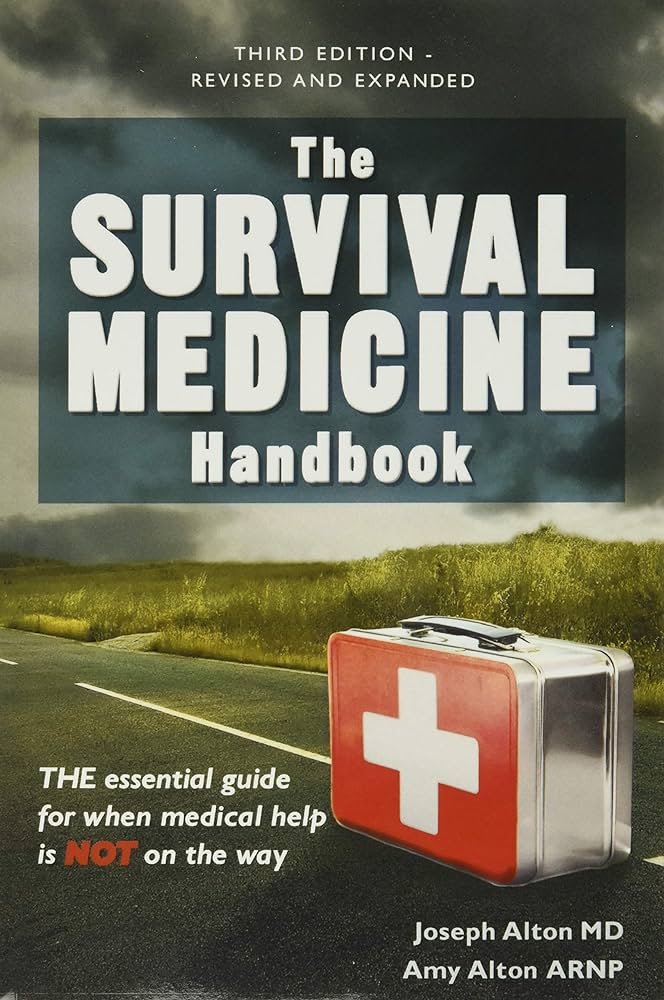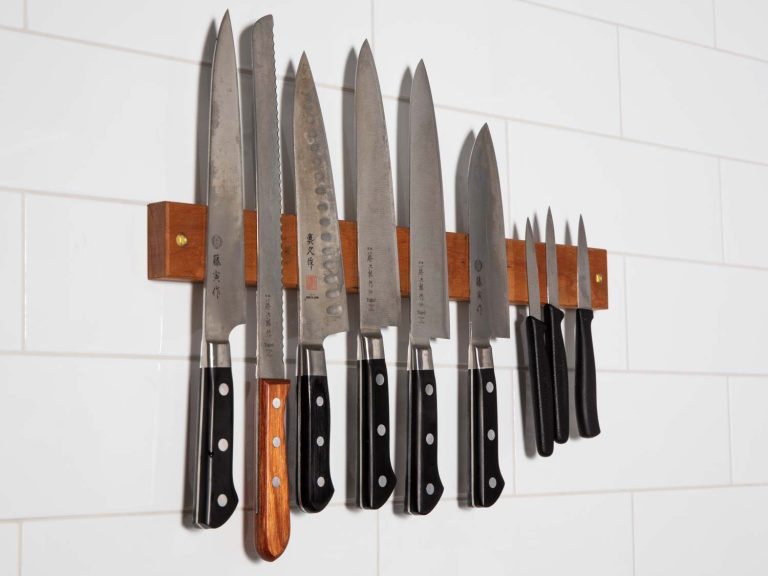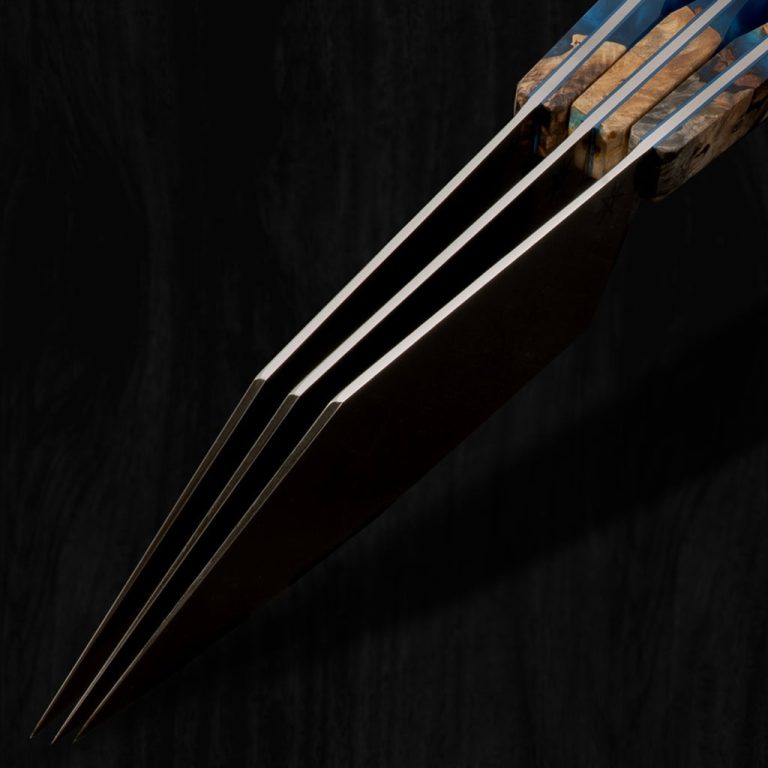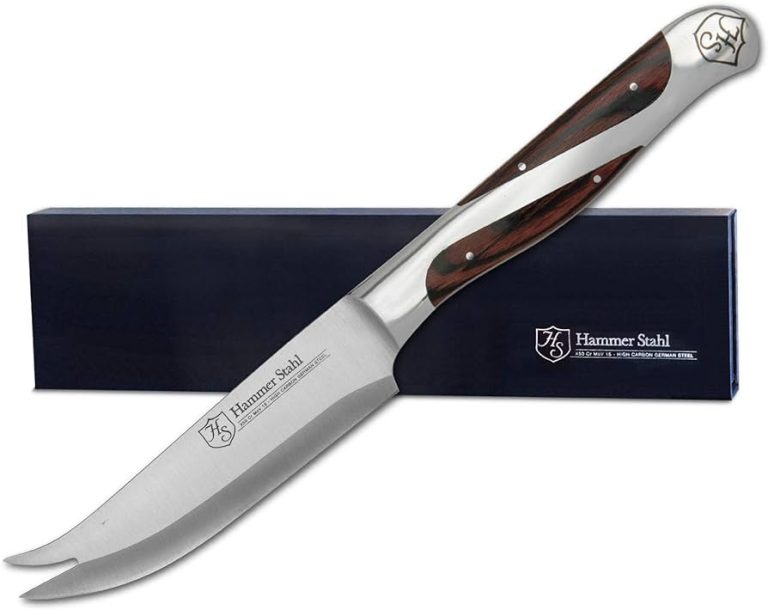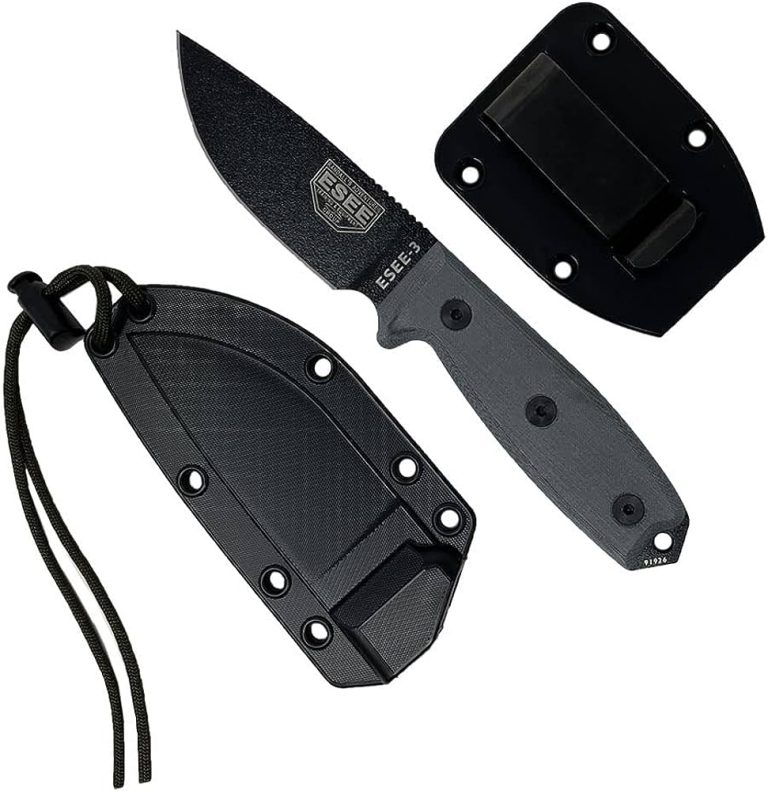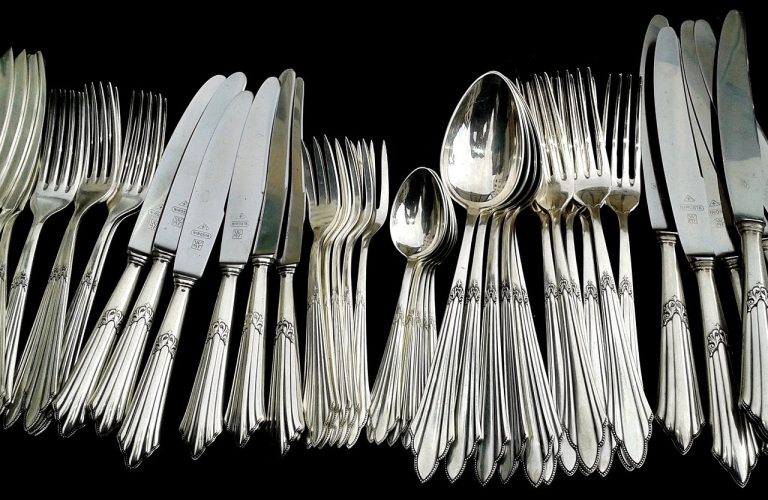Kitchen Knife Handle : Transform Your Cooking Experience with Ergonomic Power
A kitchen knife handle is the part of the knife that you hold while using it. It provides grip and control for safe and efficient cutting.
The handle plays a crucial role in the overall functionality and comfort of the knife, as it should be ergonomic and made of a durable material. Quality knife handles are usually made from materials such as wood, plastic, or metal, with a comfortable and non-slip design.
The handle should also be securely attached to the blade to ensure stability and safety during use. Choosing the right kitchen knife handle is essential for a pleasant cooking experience and optimal cutting performance.
Understanding The Importance Of Ergonomic Power
An ergonomic kitchen knife handle is an essential feature that can greatly enhance your cooking experience. By understanding the importance of ergonomic power, you can truly appreciate the benefits it offers. One significant advantage of an ergonomic handle is the enhanced comfort it provides. The handle is designed to fit perfectly in your hand, promoting a natural grip and reducing the strain on your wrist and fingers. This, in turn, minimizes fatigue, allowing you to work in the kitchen for extended periods without discomfort.
Another advantage is the ergonomic handle’s ability to reduce the risk of accidents. With a secure grip, you have better control while chopping, slicing, and dicing, reducing the chances of the knife slipping or causing injuries. Additionally, an ergonomic handle promotes efficient and precise movements, enabling you to handle the knife with ease and accuracy.
Choosing a knife with an ergonomic handle not only improves your cooking experience but also prioritizes your safety and well-being in the kitchen. So when selecting your next kitchen knife, consider the benefits an ergonomic handle brings – comfort, reduced fatigue, improved control, and enhanced safety.
Choosing The Right Kitchen Knife Handle Material
The handle material of a kitchen knife plays a crucial role in delivering a comfortable and secure grip. The choice of handle material depends on individual preferences and the specific requirements of each user. When it comes to handle materials, it’s important to examine different options such as wood, plastic, and composite handles.
Wood handles offer a timeless and natural appeal. They provide a warm and comfortable grip, enhancing the user’s control and precision. However, wood handles may require regular maintenance to prevent staining and moisture damage.
Plastic handles, on the other hand, offer durability, affordability, and a wide range of colors and designs. They are generally lightweight and easy to clean, making them a popular choice for many home cooks. However, some plastic handles may lack the same level of grip as other materials.
Composite handles combine the benefits of different materials, such as wood and plastic, to offer the best of both worlds. They provide a comfortable grip while also being highly durable and resistant to moisture. Composite handles can be an excellent choice for those seeking a balance between aesthetics and functionality.
When choosing a kitchen knife handle material, it’s essential to evaluate the pros and cons of each option. Consider factors such as comfort, durability, maintenance requirements, and overall performance to make an informed decision.
Exploring Innovative Kitchen Knife Handle Designs
The design of kitchen knife handles has evolved significantly in recent years, with innovative advancements that enhance both safety and control. One notable development is the introduction of nonslip handles, which offer improved grip and prevent accidental slips during food preparation. These handles are designed with textured surfaces or incorporate materials that provide traction even when wet. Another exciting trend is the use of curved handles, which are ergonomically designed to fit comfortably in the hand. This design not only improves grip but also allows for better control and precision while cutting. With these latest advancements in handle design, chefs and cooking enthusiasts can enjoy enhanced performance and efficiency in the kitchen.
Maintaining Your Kitchen Knife Handle For Longevity
Maintaining your kitchen knife handle is essential for its longevity. Proper care and cleaning techniques can help prevent damage and ensure that your knife handle stays in excellent condition. Here are some tips to follow:
- Clean the handle with warm, soapy water after each use, ensuring to wipe it dry thoroughly.
- Avoid submerging the handle in water for extended periods, as this can cause it to weaken and crack over time.
- Never soak the handle or put it in the dishwasher, as high heat and harsh detergents can damage the material.
- If your handle is made of wood, periodically treat it with a food-safe oil to maintain its moisture and prevent drying out.
- When storing your knife, make sure the handle is protected and not in direct contact with other utensils to prevent scratches and potential damage.
- Avoid using abrasive cleaners or scouring pads on the handle, as they can scratch the surface and compromise its integrity.
By following these guidelines, you can keep your kitchen knife handle in excellent condition and enjoy its longevity.
Upgrading Your Cooking Experience With Customized Handles
Upgrading Your Cooking Experience with Customized Handles | |
Enhance your culinary skills and make a statement in the kitchen with customized handles for your kitchen knives. These handles provide more than just an aesthetic appeal – they offer functionality and comfort too. | |
Perfect FitCustom handles ensure a perfect fit for your hand, allowing for better control and precision while cutting. The ergonomically designed handles offer a comfortable grip, reducing fatigue during extended cooking sessions. | Individual StyleShowcase your unique personality with a custom handle. Choose from a wide range of materials, colors, and patterns to match your kitchen decor and personal taste. Whether you prefer a classic wooden handle or a sleek modern design, there are options available to suit every preference. |
Long-Lasting DurabilityInvesting in a custom handle means investing in quality. Many customized handles are made from high-quality materials that enhance durability and longevity. Say goodbye to handle wear and tear, and enjoy a knife that remains dependable for years to come. | |
Easy MaintenanceCustom handles are designed with practicality in mind. They are often easy to clean and maintain, ensuring that your knife remains in top condition. Simply wipe off any residue or dirt, and your handle will be as good as new. | |
Enhanced SafetyPersonalized handles can improve safety in the kitchen. The right handle can provide a firm grip and prevent accidental slips or cuts. Make cooking a safer and more enjoyable experience. | |
ConclusionUpgrade your cooking experience with a customized handle for your kitchen knife. Enjoy the perfect fit, showcase your individual style, and benefit from enhanced durability, easy maintenance, and improved safety. Personalize your knife and elevate your culinary skills to new heights. | |
Ensuring Comfort And Safety: The Role Of Handle Ergonomics
Understanding the ergonomics of kitchen knife handles is crucial for ensuring both comfort and safety during food preparation. The design of the handle plays a significant role in determining the overall performance and usability of a knife. The handle needs to be carefully crafted to fit comfortably in the hand, providing a secure grip and minimizing the risk of accidents.
An ergonomic handle helps reduce the strain on the hand and wrist, allowing for extended periods of use without discomfort or fatigue. The shape of the handle should promote a natural and comfortable hand position, ensuring a firm grasp and precise control over the knife. Additionally, the material used for the handle should be slip-resistant, providing a secure grip even when the hands are wet or oily.
By prioritizing handle ergonomics in kitchen knife design, manufacturers can enhance user experience and make knife usage safer and more enjoyable. Whether it’s a professional chef or a home cook, a well-designed handle can significantly improve cutting performance and overall satisfaction in the kitchen.
Enhance Your Knife Collection: Exploring Specialty Handles
Enhance your knife collection by exploring specialty handles. Different culinary tasks require unique handles for optimal performance. For fillet knives, consider **ergonomic rubber handles** that provide a secure grip, reducing the risk of accidents. These handles are designed to withstand exposure to water and are easy to clean, making them ideal for filleting fish or working with wet ingredients. On the other hand, bread knives benefit from handles made of **durable wood**. The natural texture and oiliness of the wood make it easier to handle the knife, especially when slicing through crusty bread. Additionally, handles featuring an **antibacterial coating** are essential for maintaining hygiene in the kitchen while cutting raw meats. Remember, the right handle can make a significant difference in your cutting experience, so choose wisely.
| Culinary Task | Recommended Handle |
|---|---|
| Fillet Knives | Ergonomic rubber handles |
| Bread Knives | Durable wood handles |
| Working with Raw Meats | Handles with an antibacterial coating |

Credit: www.epicurious.com
Enhancing Precision And Control: Ergonomic Handle Features
Enhancing Precision and Control: Ergonomic Handle Features
Achieving a precise and controlled cut in the kitchen starts with a well-designed knife handle. One key feature that enhances grip and control is the incorporation of finger grooves. These grooves are strategically placed to fit the natural contours of your hand, allowing for a secure and comfortable grip. By aligning your fingers with the grooves, you can apply the right amount of pressure and maintain stability while using the knife.
Another important aspect of an ergonomic handle is its balance. Knife handles that are properly balanced improve maneuverability, reducing strain on your hand and wrist. A well-balanced handle allows for effortless control and precise movement during cutting tasks. Whether you’re slicing vegetables or chopping meat, a balanced handle ensures that you can focus on the task at hand without unnecessary discomfort.
Kitchen Knife Handle Maintenance: Troubleshooting Common Issues
Kitchen Knife Handle Maintenance: Troubleshooting Common Issues
Kitchen knife handle maintenance is crucial for ensuring a safe and comfortable cooking experience. One common issue that arises is loose or damaged handles. To repair a loose handle, start by identifying the cause. It could be due to a loose rivet, which can be tightened using a hammer and a punch. If the handle is damaged, you may need to replace it entirely. Restoring handles to their original condition often involves sanding away any rough spots and applying a protective finish. It’s important to regularly inspect your knife handles for any signs of wear or damage and address them promptly. By taking care of your kitchen knife handles, you can prolong their lifespan and maintain optimal performance in the kitchen.
Kitchen Knife Handle Safety: Preventing Accidents In The Kitchen
Kitchen knife handle safety is of utmost importance in preventing accidents in the kitchen. Proper handling techniques should be followed to avoid injuries. When using a kitchen knife, ensuring a firm grip on the handle is crucial. **Always hold the handle firmly** and avoid using excessive force while cutting or chopping. Moreover, **keep the handle clean and dry** to prevent it from slipping out of your hand.
Additionally, storing knives safely is essential for protecting both the handle and the blade. **Using a knife block or magnetic strip** is a great way to store knives securely, preventing accidental injuries caused by mishandling or falling. **Avoid placing them loose in kitchen drawers**, as reaching for them can be risky. Finally, **never leave knives unattended**, especially if there are children around, as it could lead to accidents and injuries. By following these guidelines, you can ensure kitchen knife handle safety and prevent accidents in the kitchen.
Upgrade Your Cooking Game: Finding The Perfect Kitchen Knife Handle
When it comes to choosing the right handle for your kitchen knife, there are several factors you should consider. First and foremost, the handle material plays a vital role in enhancing your grip and control while cutting. Common handle materials include wood, plastic, and metal. Each material has its own unique advantages and disadvantages, so it’s essential to understand your needs and preferences.
Wooden handles are popular for their natural beauty and comfortable feel, but they may require regular maintenance to prevent damage. Plastic handles, on the other hand, offer durability and easy cleaning. Metal handles provide a sleek and modern look, but they can be uncomfortable during extended use.
Another factor to consider is the handle design. Ergonomically designed handles with curves and contours can minimize strain on your hand and wrist, ensuring a comfortable grip. Additionally, handle shape and weight distribution can affect the knife’s balance and stability.
In conclusion, finding the perfect kitchen knife handle requires careful consideration of materials, design, and your personal preferences. By exploring different options, you can upgrade your cooking game and enjoy a more enjoyable and efficient culinary experience.
Conclusion
Choosing the right kitchen knife handle is crucial for both functionality and safety in the kitchen. The material of the handle plays a vital role in providing a comfortable grip and preventing slips or accidents. Wood, plastic, and stainless steel are common options, each with their own unique benefits and characteristics.
Additionally, the handle design and shape should be considered to ensure a comfortable and ergonomic grip. It is also important to factor in personal preferences and cooking style when selecting a knife handle. Understanding the different options available and their pros and cons will enable you to make an informed decision that suits your needs.
So, whether you are a professional chef or a cooking enthusiast, investing in a high-quality knife with a well-designed handle will undoubtedly enhance your culinary experience and make your time in the kitchen more enjoyable.

